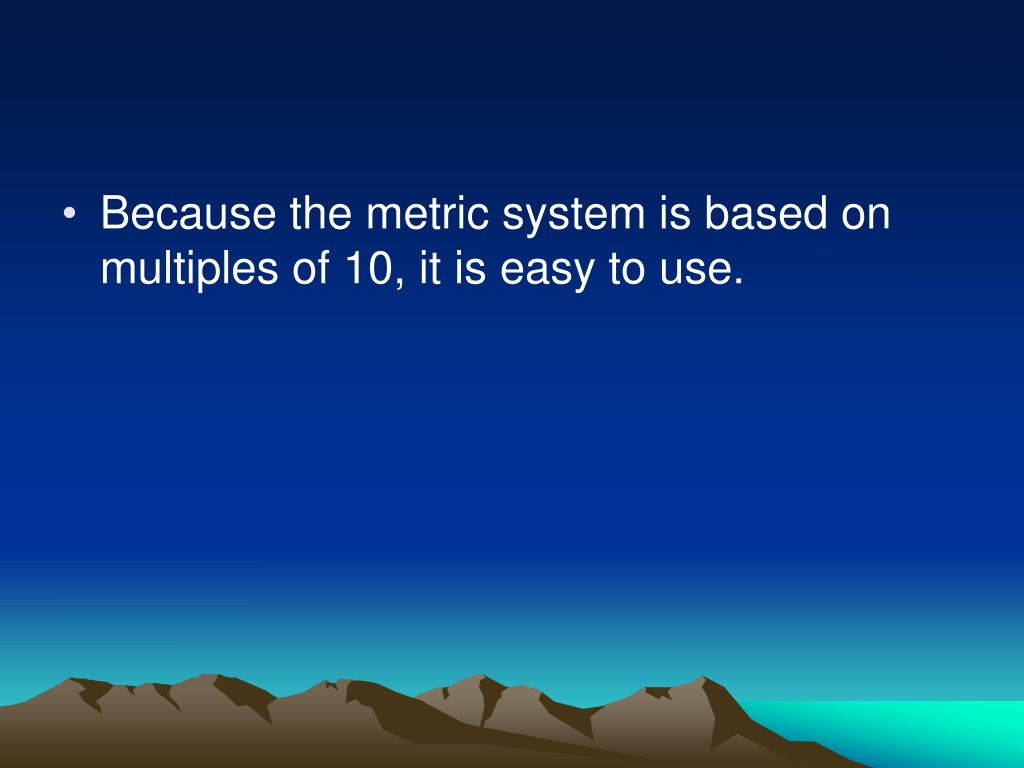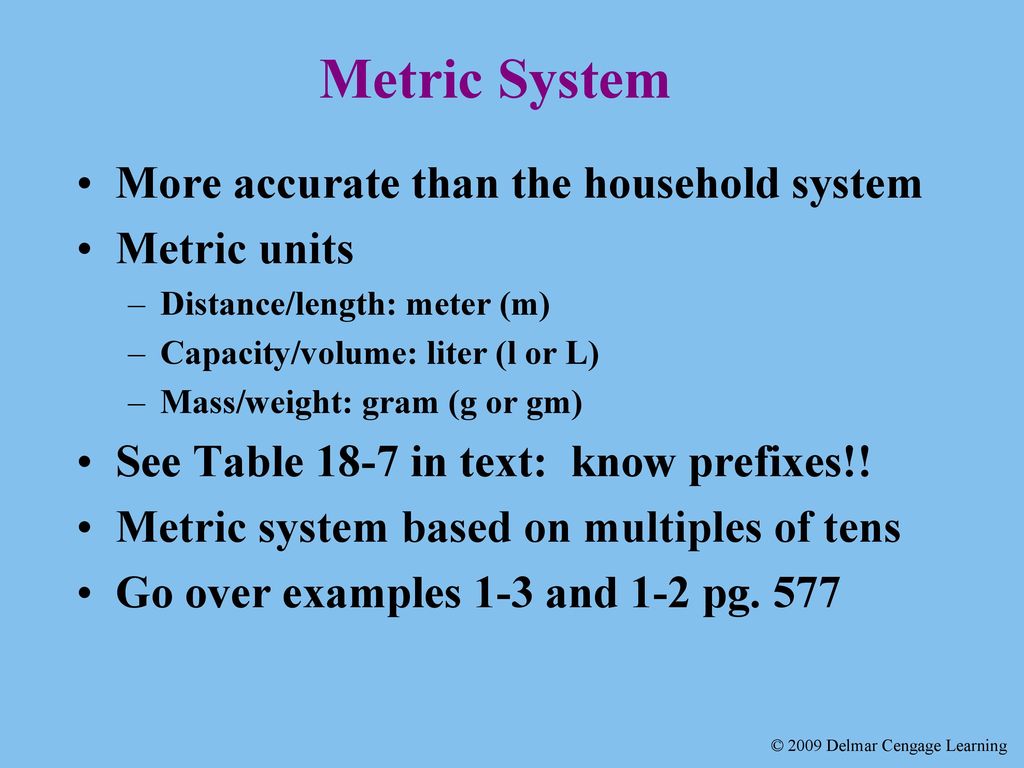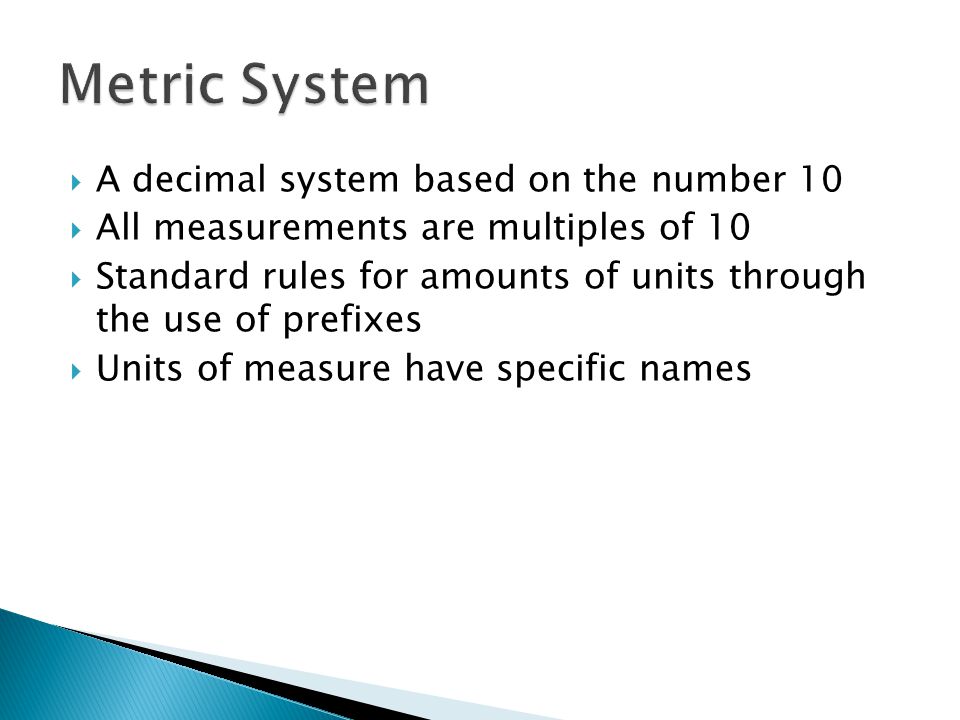The Metric System Is Based On Multiples Of

The metric system, a decimal-based system of measurement, is undergoing renewed discussion amidst ongoing global efforts towards standardization and increased efficiency in trade, science, and everyday life. Its reliance on multiples of ten provides a cohesive and easily convertible structure that contrasts sharply with older, more fragmented systems.
The metric system's inherent structure, built around powers of ten, simplifies calculations and conversions, offering a unified approach to measuring length, mass, time, and other physical quantities. This inherent scalability is significant, because it directly impacts international commerce, scientific research, and even consumer understanding of product measurements.
The Foundation: Multiples of Ten
At its core, the metric system operates on prefixes attached to base units. These prefixes indicate multiples or fractions of ten, allowing for seamless conversion between units of varying sizes. For example, a kilometer is 1,000 meters, while a millimeter is 1/1000th of a meter.
This decimal structure eliminates the need for memorizing cumbersome conversion factors, common in systems like the imperial system used in the United States. In the metric system, moving between units simply involves shifting the decimal point, dramatically reducing the risk of errors.
Key Components of the Metric System
The International System of Units (SI), the modern form of the metric system, comprises seven base units. These units define fundamental quantities: the meter (m) for length, the kilogram (kg) for mass, the second (s) for time, the ampere (A) for electric current, the kelvin (K) for thermodynamic temperature, the mole (mol) for amount of substance, and the candela (cd) for luminous intensity.
From these base units, other units are derived. For example, the unit of volume, the liter (L), is defined as a cubic decimeter (0.1 meters cubed), again emphasizing the system's inherent reliance on multiples of ten.
Historical Context and Evolution
The metric system originated in France during the French Revolution in the late 18th century. Its creators sought to replace the diverse and often arbitrary units of measurement prevalent at the time with a rational and universal system.
Initially, the meter was defined as one ten-millionth of the distance from the equator to the North Pole along a meridian passing through Paris. Over time, the definitions of the base units have become more precise, based on fundamental physical constants.
Global Adoption and Current Usage
Today, the metric system is the official system of measurement for nearly every country in the world. The United States remains a notable exception, although the metric system is widely used in science, medicine, and industry.
The global adoption of the metric system has facilitated international trade by providing a common language of measurement. It also aids in scientific collaboration, minimizing confusion and errors in research and data sharing.
Impact on Science and Industry
The metric system is indispensable in scientific research due to its simplicity and accuracy. Calculations involving physical quantities are significantly easier when units are consistently expressed in terms of multiples of ten.
In industry, the metric system streamlines manufacturing processes, reduces errors, and facilitates international collaboration. The automotive and aerospace industries, for instance, heavily rely on metric measurements for precision engineering.
The Future of the Metric System
Despite the widespread adoption of the metric system, challenges remain in promoting its universal usage. The continued use of imperial units in the United States, for instance, creates ongoing complexities in international trade and communication.
Organizations like the National Institute of Standards and Technology (NIST) in the U.S. actively promote metric education and adoption. They highlight the benefits of standardization and the potential for increased efficiency across various sectors.
A Human Perspective
For many, the shift to the metric system can be a source of confusion and resistance. Individuals accustomed to imperial units may find it challenging to visualize measurements in meters, kilograms, or liters.
However, proponents of the metric system argue that its simplicity ultimately makes it easier to learn and use. They emphasize the importance of education and awareness in facilitating a smooth transition to a more rational system of measurement.
Conclusion
The metric system's foundation in multiples of ten has proven to be a powerful tool for standardization and efficiency. Its widespread adoption across the globe underscores its value in fostering international collaboration and streamlining scientific and industrial processes.
As the world becomes increasingly interconnected, the advantages of a unified and easily convertible system of measurement will likely become even more apparent. The continued promotion of metric education and awareness is crucial in realizing the full potential of this system for the benefit of society as a whole.







+Being+based+on+multiples+of+ten+makes+it+easy+to+use..jpg)
.+Scientists+all+over+the+world+use+metric+units..jpg)


+Units+are+based+on+multiples+of+10..jpg)
+-+unit+of+measure.jpg)





